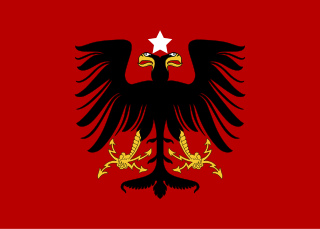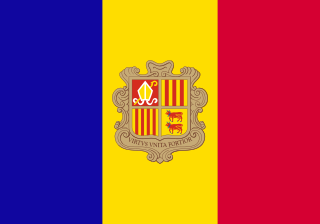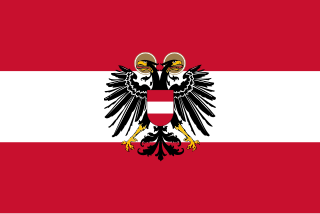Sovereign states
A









The Emirate of Afghanistan was an emirate between Central Asia and South Asia, which is now today's Islamic Republic of Afghanistan. The emirate emerged from the Durrani Empire, when Dost Mohammed Khan, the founder of the Barakzai dynasty in Kabul, prevailed. The history of the Emirate was dominated by 'the Great Game' between the Russian Empire and the United Kingdom for supremacy in Central Asia. This period was characterized by the expansion of European colonial interests in South Asia. The Emirate of Afghanistan continued the war with the Sikh Empire, which led to the invasion of Afghanistan by British-led Indian forces who did not accomplish their war objectives. However, during the Second Anglo-Afghan War, the British again fought against the Afghans and this time the British took control of Afghanistan's foreign affairs until Emir Amanullah Khan regained them after the Anglo-Afghan Treaty of 1919 was signed following the Third Anglo-Afghan War.

The Principality of Albania refers to the short-lived monarchy in Albania, headed by William, Prince of Albania, that lasted from the Treaty of London of 1913 which ended the First Balkan War, through the invasions of Albania during World War I and the subsequent disputes over Albanian independence during the Paris Peace Conference of 1919, until 1925, when the monarchy was abolished and the Albanian Republic declared.

Andorra, officially the Principality of Andorra, also called the Principality of the Valleys of Andorra, is a sovereign landlocked microstate on the Iberian Peninsula, in the eastern Pyrenees, bordering France to the north and Spain to the south. Believed to have been created by Charlemagne, Andorra was ruled by the Count of Urgell until 988, when it was transferred to the Roman Catholic Diocese of Urgell, and the present principality was formed by a charter in 1278. It is known as a principality as it is a diarchy headed by two Princes: the Catholic Bishop of Urgell in Catalonia, Spain, and the President of France.
![]()
![]()
- Republic of German Austria (to September 10)
- Federal State of Austria (from September 10)


The Federal State of Austria was a continuation of the First Austrian Republic between 1934 and 1938 when it was a one-party state led by the clerico-fascist Fatherland Front. The Ständestaat concept, derived from the notion of Stände, was propaganda advocated by leading regime politicians such as Engelbert Dollfuss and Kurt Schuschnigg. The result was an authoritarian government based on a mix of Italian Fascist and conservative Catholic influences.

The Azerbaijan Democratic Republic, also known as Azerbaijan People's Republic or Caucasus Azerbaijan in diplomatic documents, was the third democratic republic in the Turkic world and Muslim world, after the Crimean People's Republic and Idel-Ural Republic. The ADR was founded by the Azerbaijani National Council in Tiflis on 28 May 1918 after the collapse of the Russian Empire. Its established borders were with Russia to the north, the Democratic Republic of Georgia to the north-west, the First Republic of Armenia to the west, and Iran to the south. It had a population of 2.86 million. Ganja was the temporary capital of the Republic as Baku was under Bolshevik control. The name of "Azerbaijan" which the leading Musavat party adopted, for political reasons, was, prior to the establishment of the Azerbaijan Democratic Republic in 1918, exclusively used to identify the adjacent region of contemporary northwestern Iran.
B





Belgium, officially the Kingdom of Belgium, is a sovereign state in Western Europe. It is bordered by the Netherlands to the north, Germany to the east, Luxembourg to the southeast, France to the southwest, and the North Sea to the northwest. It covers an area of 30,688 km2 (11,849 sq mi) and has a population of more than 11.4 million. The capital and largest city is Brussels; other major cities are Antwerp, Ghent, Charleroi and Liège.

Bolivia, officially the Plurinational State of Bolivia, is a landlocked country located in western-central South America. The capital is Sucre, while the seat of government and financial center is located in La Paz. The largest city and principal industrial center is Santa Cruz de la Sierra, located on the Llanos Orientales, a mostly flat region in the east of the country.

The First Brazilian Republic or República Velha is the period of Brazilian history from 1889 to 1930. The República Velha ended with the Brazilian Revolution of 1930 that installed Getúlio Vargas as a dictator.
C








Canada is a country in the northern part of North America. Its ten provinces and three territories extend from the Atlantic to the Pacific and northward into the Arctic Ocean, covering 9.98 million square kilometres, making it the world's second-largest country by total area. Its southern border with the United States, stretching some 8,891 kilometres (5,525 mi), is the world's longest bi-national land border. Canada's capital is Ottawa, and its three largest metropolitan areas are Toronto, Montreal, and Vancouver.

Chile, officially the Republic of Chile, is a South American country occupying a long, narrow strip of land between the Andes to the east and the Pacific Ocean to the west. It borders Peru to the north, Bolivia to the northeast, Argentina to the east, and the Drake Passage in the far south. Chilean territory includes the Pacific islands of Juan Fernández, Salas y Gómez, Desventuradas, and Easter Island in Oceania. Chile also claims about 1,250,000 square kilometres (480,000 sq mi) of Antarctica, although all claims are suspended under the Antarctic Treaty.

The Republic of China (ROC) was a sovereign country that existed between 1912 and 1949 in Mainland China, which is now controlled by the People's Republic of China. It was established in January 1912 after the Xinhai Revolution, which overthrew the Qing dynasty, the last imperial dynasty of China. The Republic's first president, Sun Yat-sen, served only briefly before handing over the position to Yuan Shikai, the leader of the Beiyang Army. Sun's party, the Kuomintang (KMT), then led by Song Jiaoren, won the parliamentary election held in December 1912. However, Song was assassinated on Yuan's orders shortly after; and the Beiyang Army, led by Yuan, maintained full control of the Beiyang government. Between late 1915 and early 1916, Yuan Shikai was the self-proclaimed Emperor of China before abdicating due to popular unrest. After Yuan's death in 1916, the authority of the Beiyang government was further weakened by a brief restoration of the Qing dynasty. Cliques in the Beiyang Army claimed individual autonomy and clashed with each other during the ensuing Warlord Era.
D


E





Ecuador, officially the Republic of Ecuador, is a country in northwestern South America, bordered by Colombia on the north, Peru on the east and south, and the Pacific Ocean on the west. Ecuador also includes the Galápagos Islands in the Pacific, about 1,000 kilometres (620 mi) west of the mainland. The capital city is Quito, which is also the largest city.

El Salvador, officially the Republic of El Salvador, is the smallest and the most densely populated country in Central America. It is bordered on the northeast by Honduras, on the northwest by Guatemala, and on the south by the Pacific Ocean. El Salvador's capital and largest city is San Salvador. As of 2016, the country had a population of approximately 6.34 million.

Estonia, officially the Republic of Estonia, is a country in Northern Europe. It is bordered to the north by the Gulf of Finland with Finland on the other side, to the west by the Baltic Sea with Sweden on the other side, to the south by Latvia (343 km), and to the east by Lake Peipus and Russia (338.6 km). The territory of Estonia consists of a mainland and 2,222 islands in the Baltic Sea, covering a total area of 45,227 km2 (17,462 sq mi), water 2,839 km2 (1,096 sq mi), land area 42,388 km2 (16,366 sq mi), and is influenced by a humid continental climate. The official language of the country, Estonian, is the second-most-spoken Finnic language.
F

- Kingdom of Finland (to July 17)
- Republic of Finland (from July 17)


The Kingdom of Finland was an abortive attempt to establish a monarchy in Finland following Finland's independence from Russia.

Finland, officially the Republic of Finland, is a Nordic country in Northern Europe bordering the Baltic Sea, Gulf of Bothnia, and Gulf of Finland, between Norway to the north, Sweden to the northwest, and Russia to the east. The capital and largest city is Helsinki. Other major cities are Espoo, Vantaa, Tampere, Oulu and Turku.

The French Third Republic was the system of government adopted in France from 1870, when the Second French Empire collapsed during the Franco-Prussian War, until 10 July 1940 after France's defeat by Nazi Germany in World War II led to the formation of the Vichy government in France.
G
H









I
J

L





M
N







O

P
R
S







U



- Eastern State of Uruguay (to March 1)
- Eastern Republic of Uruguay (from March 1)
V

Y

